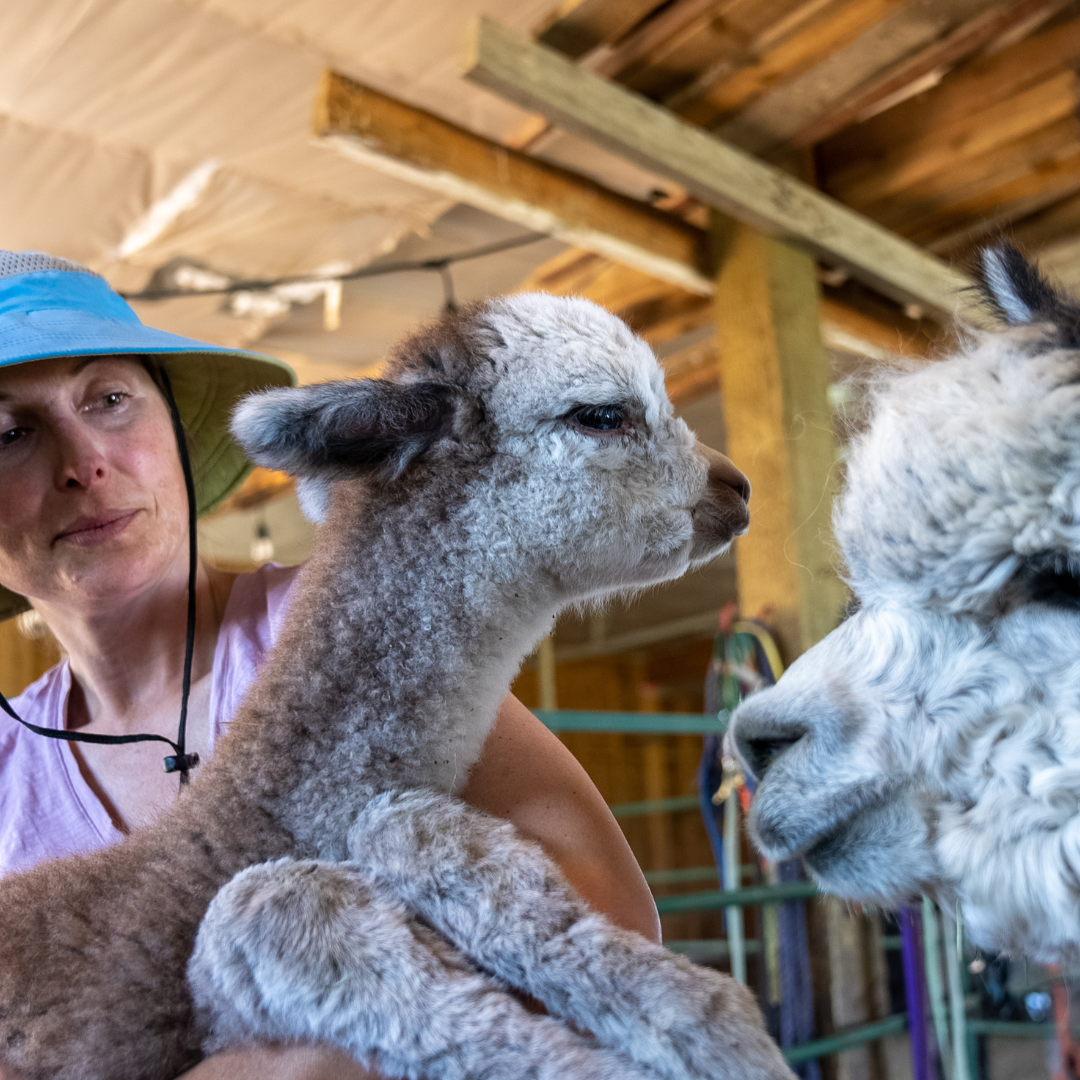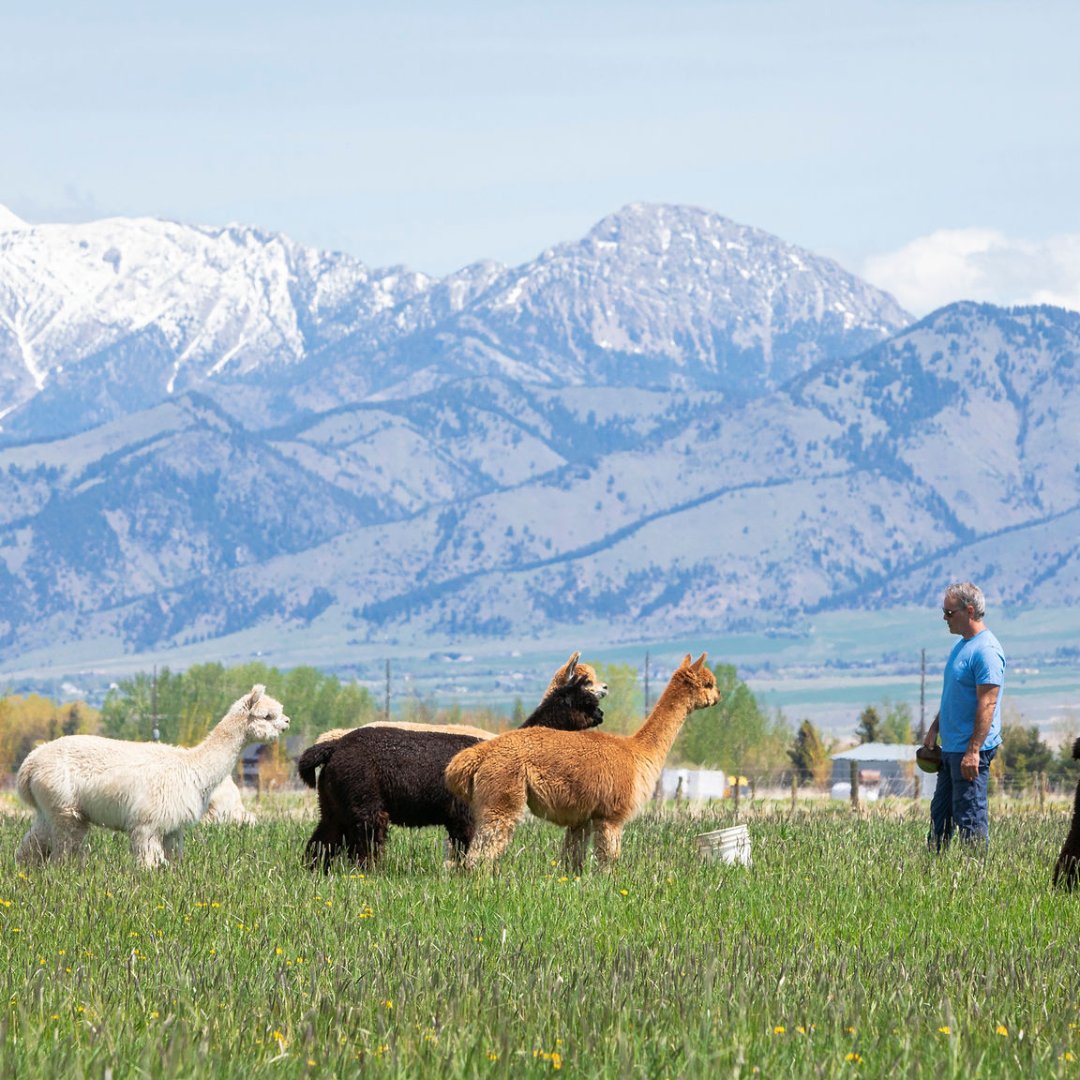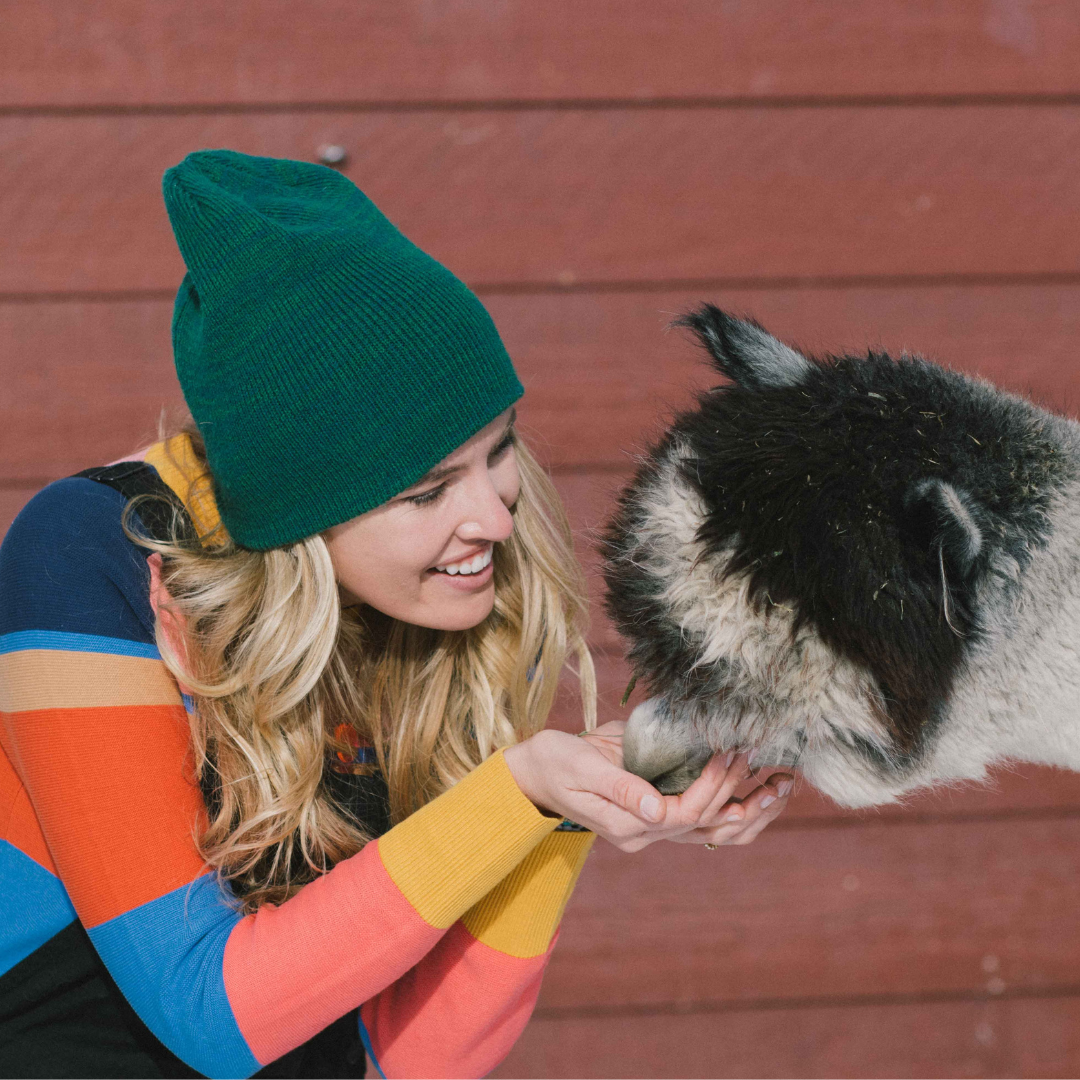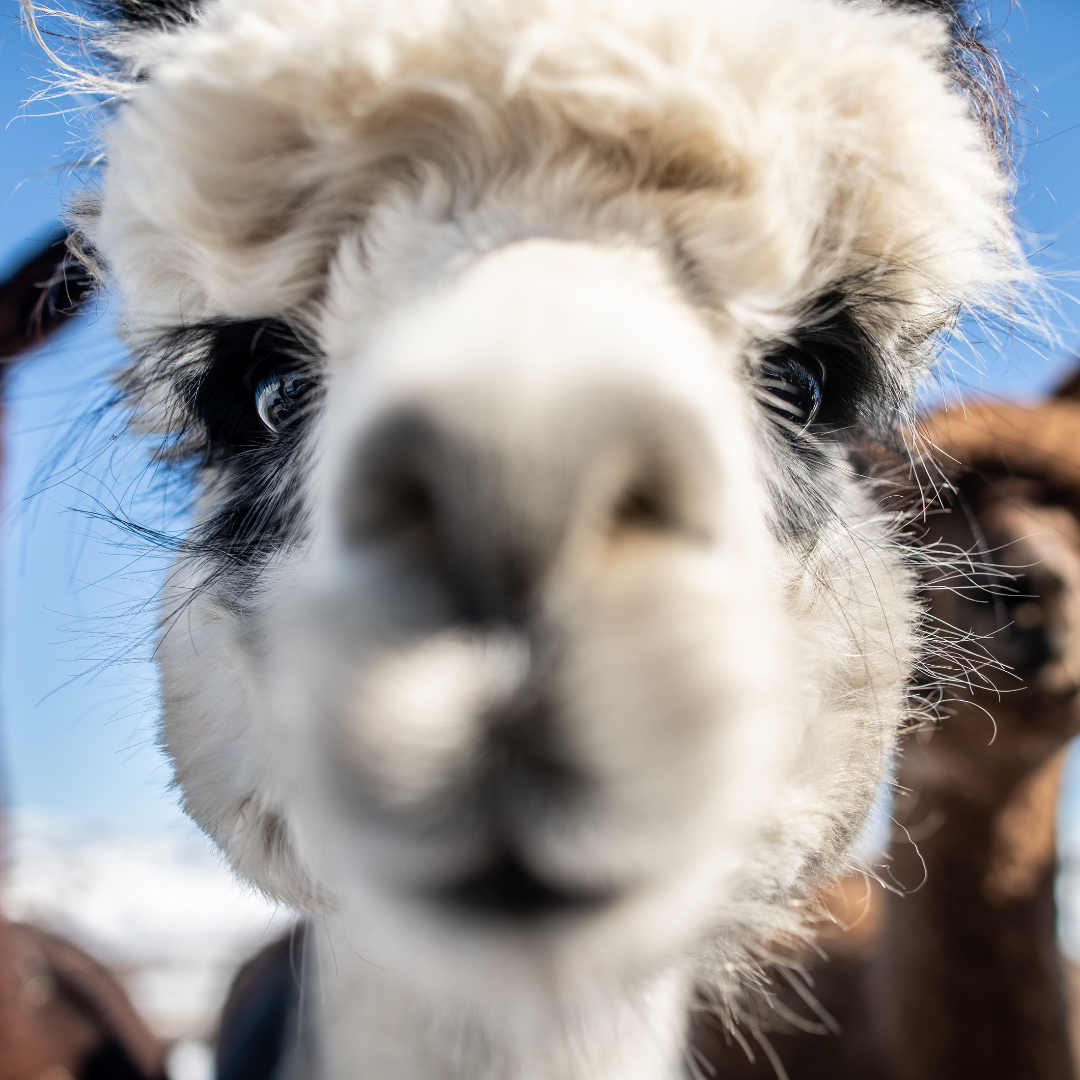A Checklist to Showing Alpacas
Because of the large response to my previous blog regarding showing alpacas, I will continue the conversation a little furter, reviewing several areas and going into others a bit more in depth.
Alpaca Show Season is in full swing, and we thought some of you might like to learn a little more about showing alpacas. People often ask us what you do at an alpaca show. Our answer, “We put a halter on the alpaca, walk him into the ring, learn a lot, and have fun with other people who are as crazy about alpacas as we are!”
The first step is to find out where you can go to a show and when it will take place. The website www.alpacashows.com has a list of all the upcoming AOBA (Alpaca Owner and Breeder Association) alpaca shows, information about them, and contact information to learn more. Some shows have their own websites with online entries. Even before you have alpacas, before you are ready to show your own, it can be a great learning experience to go to see a show. You can get a real feel for the alpaca industry and see what it’s like to be an alpaca breeder by attending a show. In addition, many shows offer educational seminars and clinics designed for people who are new to alpacas
If you are new to showing your alpacas, we have a few tips.
Prior to the show: Train your alpacas. Not just on a halter, but get them used to loud noises, standing with you for 30 or so minutes and other people approaching fairly quickly. You will be nervous enough with well-behaved alpacas, so if you can avoid having alpacas that still need lots of training it will be easier on you and the alpacas. It can be helpful to teach your alpaca to stand still next to you first, and then teach them to walk on a lead. Some alpacas have a hard time standing still in the show ring. This can help with that problem. Once they walk well on the lead, take them into an unfamiliar part of the farm where they do not usually go. They will be concerned at first, but they will learn to trust you. This will really help at the show. Practice loading them into the trailer ahead of time. It’s never fun when it takes an hour to load because the alpaca has never seen a trailer. You want your alpaca to be familiar with having his/her fleece and teeth looked at, so work with them at home by having someone else pretend to be the judge and look them over. We walk ours through city parks. If they get used to that and learn to trust you, the standing in the show-ring will be easy.
Health Papers. Check the health requirements of the state where you are going. Make sure all alpacas are microchipped (and that you have the right microchip number in your records). We read the microchip numbers at the beginning of each show season. Some alpacas have a couple of microchips and sometimes you can’t find the microchip in one. Both situations can cause some problems so it is better to have this worked out before you get to the show. All alpacas have to be BVD tested. Keep lots of copies of their BVD results. Have your vet come out to the farm within the right time frame so that you can get any testing you need done and results back in time. For us, Bruscellosis tests can take up to 2 weeks. TB tests take less time but be sure that your vet has what is needed for the test, they may need to order more. If you are stopped, the officer will want to read your alpacas’ microchips so it’s best to bring your own reader. This can save you hours of delay time in case the officer’s reader cannot read your chip. Have your vet call in advance to get the number and put it on the certificate of veterinary inspection.
What to Bring:
If the show has horse stalls where the alpacas cannot see out we usually bring a few lightweight panels so the alpacas can walk out and see each other.
-
Hay bag(s) and Hay
-
Water buckets
-
Feed, Minerals, Probiotics, Thermometer, Pellet
-
Show mats for the stall floor, if desired
-
Emergency kit with Banamine, Electrolytes, triple antibiotic ointment, eye ointment, etc.
-
Black Halters and Leads
-
Display and Banners
-
Marketing materials including flyers, brochures, tons of business cards, etc.
-
Zip-ties and something to cut them with
-
Fans, extension cords, and a power strip
-
Velcro, scissors, pocket knife
-
Show clothes (comfortable, close-toed shoes, black and white attire is traditional, black bottoms, white shirt) You cannot wear a shirt with logo in the showring.
-
Safety pins or other number holder
-
Drinks
-
Paperwork - For show, hotel, maps, directions, health papers, schedule sheet
-
Alpaca Blankets
-
Duct Tape
-
Electric cords
-
Emergency Contact Sign
-
Extra Microchip, Injector, Reader
-
Flashlight
-
Trash Bags
- Twine
- Chairs / Table
- Halters
- Hand Sanitizer
- Clip board
- Rake / Shovel / Broom / Scoop
- Zip Ties
- Info Box
- Kleenex
- Dolly for transporting to and from the vehicle
At the Show:
Network. Meet as many people as you can. Give them your business card. You never know who might be your next best customer or best friend.
If you have any alpacas that might be tricky, or let’s face it, difficult, it is best to know what upsets them. Some alpacas do okay for a short time but then get antsy. They have a short shelf life. Take those alpacas to the ring just before their class. Other alpacas are jumpy for a bit, then they settle down. With an alpaca like this you might walk them a while and wear them out before going into the ring. A third kind of alpaca is one who just plain doesn’t like showing. He/she might drool nonstop, or NEVER stand still in the ring, or take you on a rodeo ride in the ring as you attempt to show the judge their drop-dead gorgeous fleece. Sometimes alpacas even knock people down in the ring. Usually you know you have an alpaca like this prior to going to the show. If an alpaca really lets you know they despise the show scene then I recommend that you show the fleece and give the poor guy or gal (and yourself) a break. The limelight is not for everyone.
In the Show-ring:
I recently entered the showmanship class at a show on a whim. The other competitors in the class were very seasoned in showmanship. I made some mistakes, but I really learned a lot! Every time we enter the show ring, it is an opportunity to learn something, about our alpaca, out breeding program, or ourselves. Feedback from the judge is valuable so don’t forget to pay attention to the judge’s reasoning’s at the end of the class.
Some of the things I learned in the showmanship class were to smile, smile, smile and to continually make eye contact with the judge. We are ALL nervous when we go into the ring, and most of us don’t smile a lot when we are nervous. But I learned that a smile really does go a long way with judges. They have a long day with lots of alpacas to see, and most people are NOT smiling at them. You smiling will also put you in a better frame of mind, and will help you relax. Also when you are feeling those butterflies in your stomach, take a deep breath. If your alpaca senses that you are uptight he/she will react to it. They truly will feel your nerves through the lead rope so let them feel your deep, relaxed breathing instead. It will help them to relax as well.
While at the show, be sure to visit the various alpaca breeders’ booths, ask questions, and most important of all, have fun! How wonderful to take a break from your daily life, and enjoy a weekend dedicated to these magical creatures that have enchanted us all. See you in the ring!


























































































